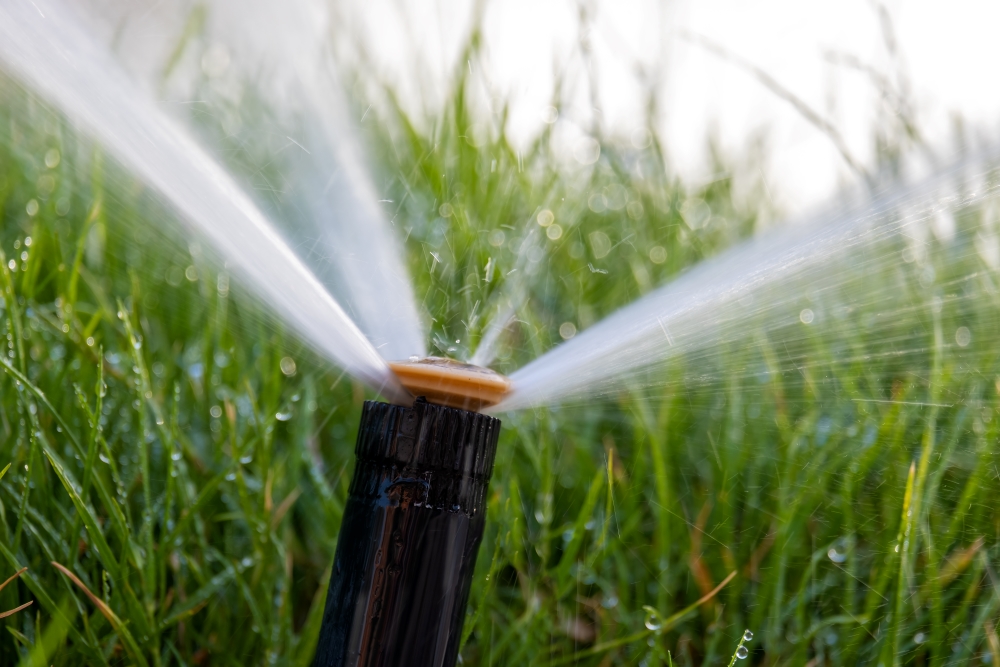A Walk, A Geyser, and a Leadership Lesson
What a busted sprinkler revealed about waste in business.

Part of my daily rhythm is a morning walk through the neighborhood—just under three miles. It keeps me grounded, energized, and often, it’s when I listen to books or podcasts that challenge my thinking. It’s a small habit that pays big dividends for both physical health and mental clarity.
But a few weeks ago, something unexpected on that walk sparked a broader reflection.
About eight minutes in, I paused my audiobook when I heard the unmistakable sound of water rushing. Across the street, I spotted it: a sprinkler head, broken and shooting water like a geyser. It was flooding the driveway, rushing down the sidewalk, and pouring straight into the storm drain. The yard wasn’t getting much of anything.
I stood there for several minutes, observing. The question that came to mind wasn’t just how much water is being wasted? —but how often does this happen in our businesses?
Hidden Waste, Real Cost
According to Angi, a typical sprinkler head distributes out about “2 to 5 gallons of water per minute.” But a broken one? It can spill “9–16 gallons per minute”—three to four times as much. (Waters, 2021) And when that water doesn’t even reach the grass, the cost isn’t just higher—it’s ineffective.
The EPA estimates a “gallon of water from our utility services cost the user roughly a penny.” That means a functioning system costs 27 to 66 cents for a 20-minute cycle. But a broken one? It could quietly waste over $1.20 every time it runs. Multiply that over days and weeks, and the impact is significant. Not because someone was careless—but because no one was paying attention.
This is where it connects to leadership. We often assume our systems are working. That our resources are reaching the right places. That effort equals impact.
But unless we’re actively observing, evaluating, and aligning those systems with our shared goals—we may just be flooding the street.
What Geysers Look Like in Business
Over the years, I’ve worked with many teams who are committed to doing good work. But even the most well-intentioned leaders can unknowingly allow waste to creep in when visibility and accountability lag behind. Here are just a few examples I’ve seen:
- Driver hours aren’t managed proactively, pushing variable costs beyond plan.
- Overtime in dispatch, maintenance, and cleaning isn’t reviewed in real time, leading to ballooning labor spend.
- Parts are removed from inventory but not linked to work orders, resulting in massive year-end write-offs.
- Fuel usage isn’t tracked with intention, and is quietly lost to excessive idling or inefficient routing.
None of these are due to a lack of caring. They happen when systems run on autopilot and when frontline realities aren’t regularly brought into leadership conversations.
The solution isn’t just a better process—it’s a better connection.
Walk the Operation, Lead with Purpose
That homeowner could have prevented the sprinkler issue with a simple check-in during the morning cycle. The same principle applies to operations.
Great leaders don’t just manage from dashboards—they walk the floor. They ride the route. They step into dispatch during peak hours. They practice Managing by Wandering Around (MBWA) not because they don’t trust their team, but because they’re committed to seeing the full picture.
They also build systems that reflect what the team values: transparency, stewardship, and excellence. Daily KPIs tied to labor, fuel, and parts aren’t just numbers—they’re tools for keeping everyone aligned and accountable.
When a company is aligned on purpose and clear on outcomes, even the smallest inefficiencies become visible—and solvable.
Shared Accountability Drives Sustainable Results
In strong cultures, the focus isn’t on individual performance—it’s on how we perform together. Geysers get spotted sooner, because people aren’t afraid to point them out. Waste gets addressed faster, because the team is united by shared standards—not silos or fear of blame.
The result? Resources flow to the right places. Teams operate with clarity. And growth becomes sustainable.
Because in leadership, just like in your front yard, watering the lawn only works when the system is working with you—not against you.

Brian Dickson is the owner of Bus Business Consultants and author of Ground Transportation Insights on Substack. Drawing on leadership roles in motorcoach operations and Disney’s Guest Transportation, he helps operators improve performance, culture, and growth—Bus Business Consultants: Driving Performance, Culture, & Growth in Ground Transportation.
This article was originally published on August 6, 2025 at Ground Transportation Insights.
Read more from Brian Dickson in the ABA News Center
- What Southwest Airlines Can Teach Ground Transportation Leaders
- When Strategy Becomes the Engine
- The Eye Doctor Who Looked Deeper
- Dirt Turns to Gold. So Can Steel.
- Championship Mindset: How Fundamentals and Metrics Build Business Success
The views expressed are those of the author alone and do not necessarily reflect the position of the American Bus Association.

